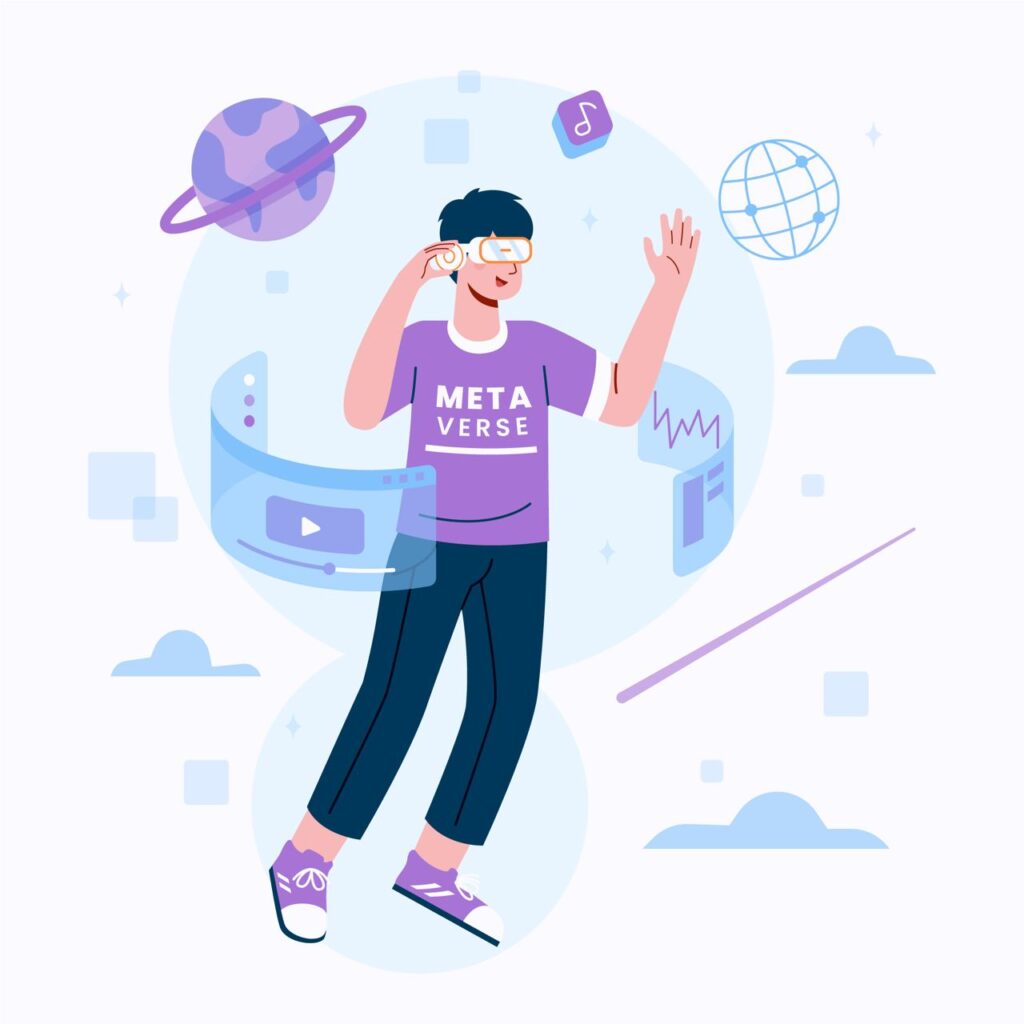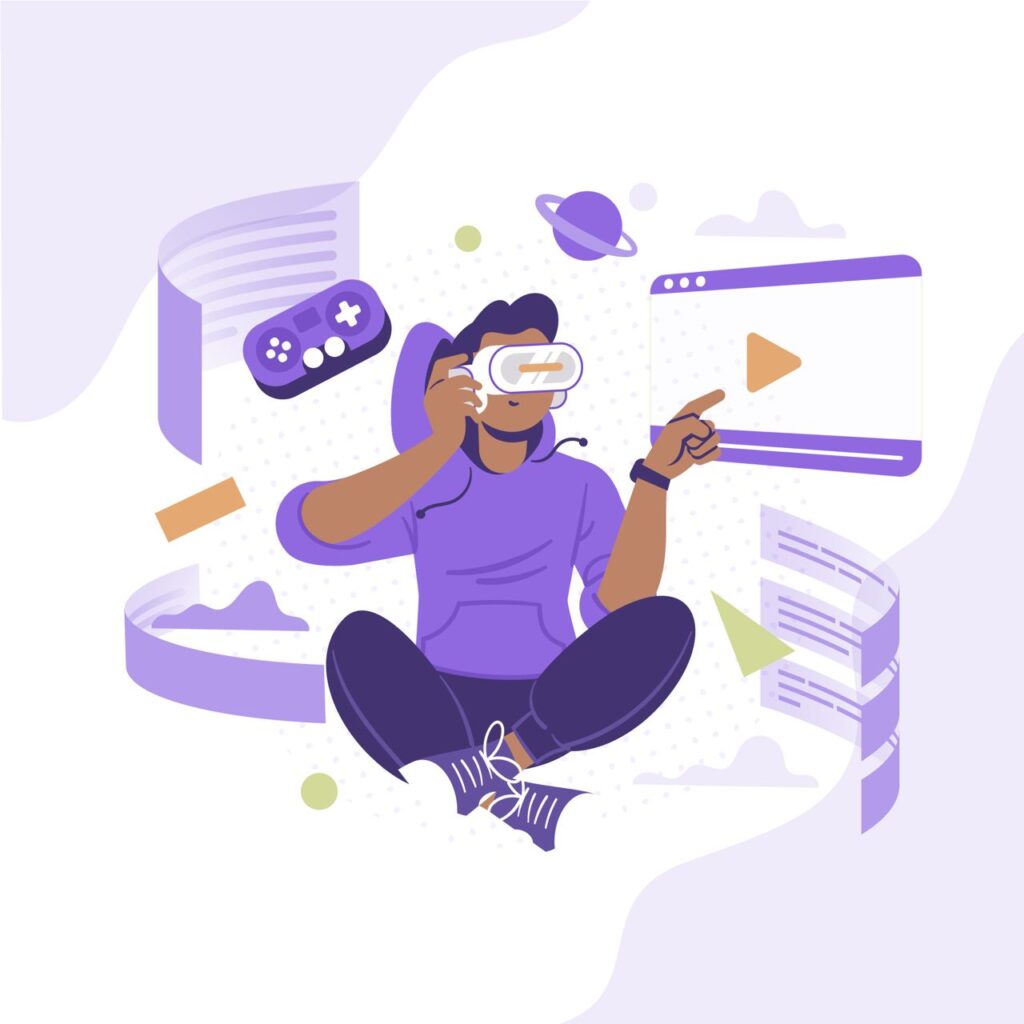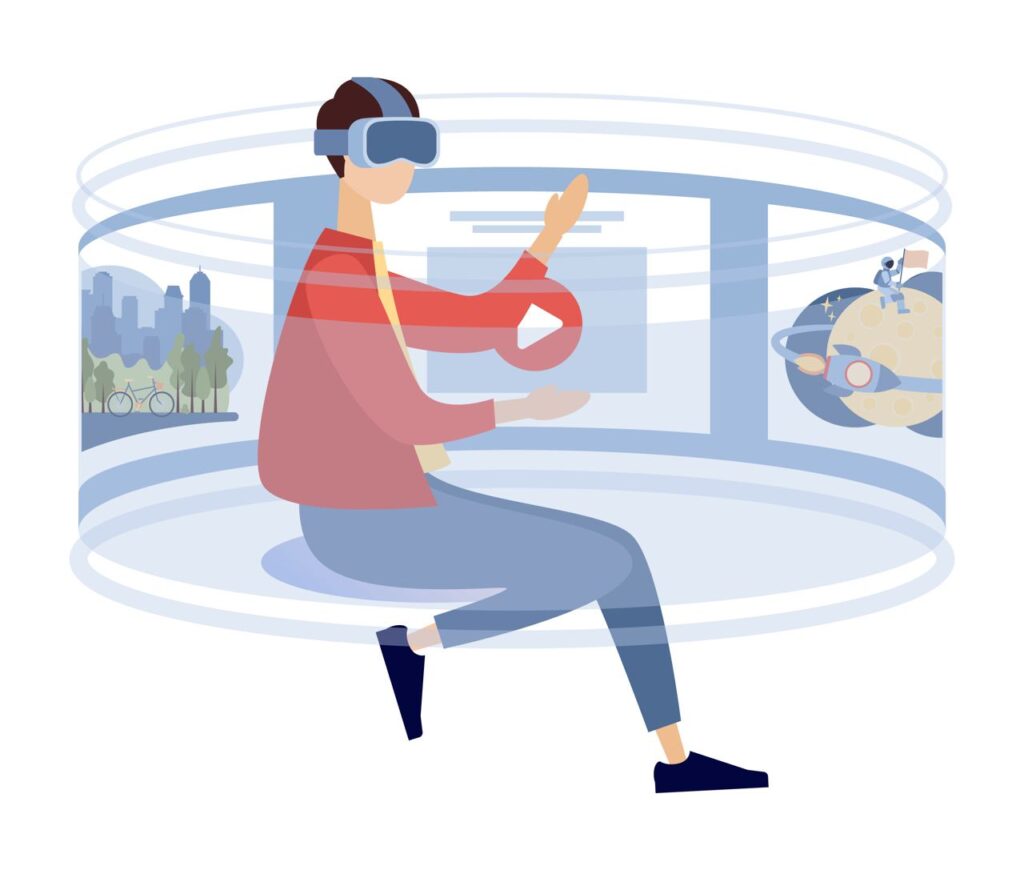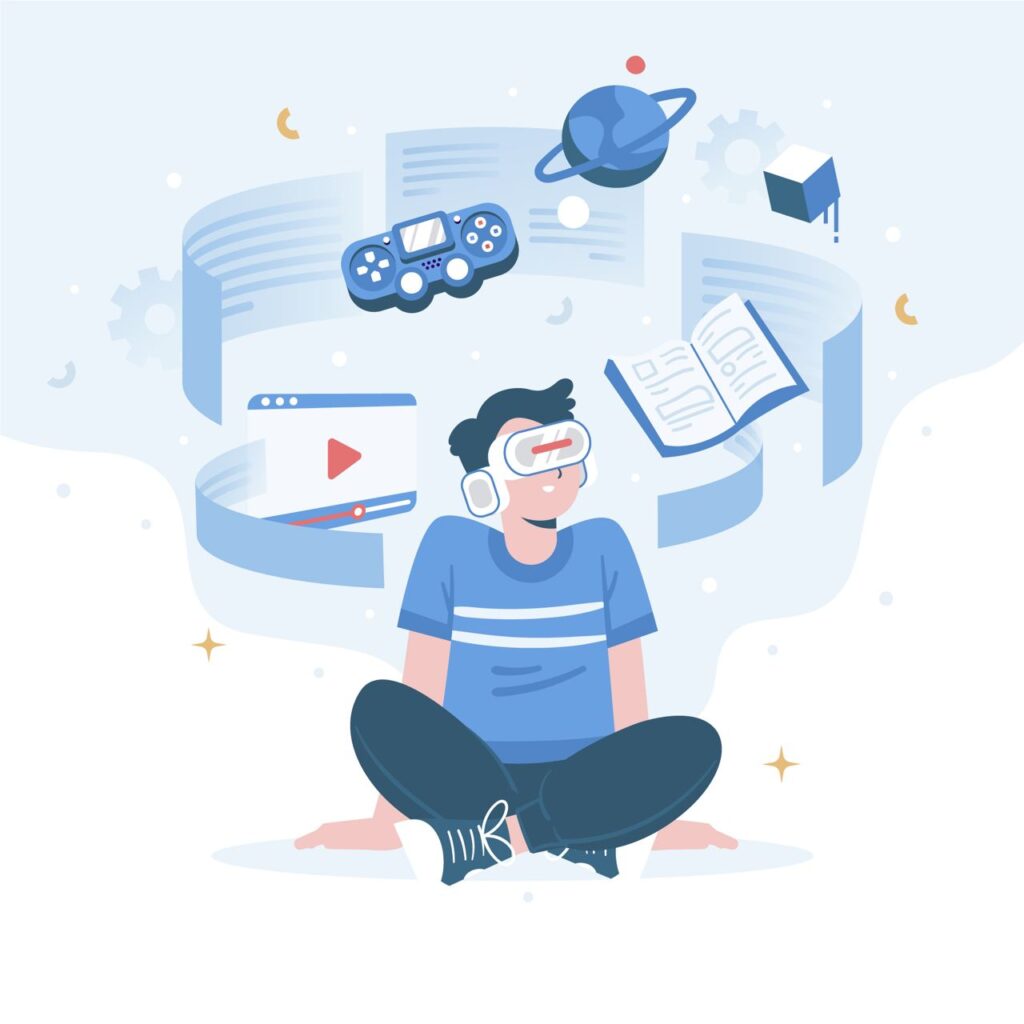The integration of Virtual Reality (VR) and Augmented Reality (AR) into educational technology (EdTech) is transforming the landscape of eLearning. These immersive technologies are not just enhancing the learning experience by making it more interactive and engaging, but they are also breaking down traditional barriers to education. This blog explores the power of AR and VR in eLearning, highlighting five exciting ways these technologies are evolving EdTech, their benefits, challenges, and real-world examples.
Power of AR/VR in eLearning
AR and VR technologies offer immersive experiences that can significantly enhance eLearning. AR overlays digital information onto the real world, while VR creates a completely immersive virtual environment. Together, they provide dynamic and interactive learning experiences that were once unimaginable.
1. Immersive learning experiences
Virtual field trips
VR in eLearning enables virtual field trips, allowing students to explore distant or inaccessible locations, from the depths of the ocean to the surface of Mars. These experiences can make learning more engaging and accessible, providing students with a deeper understanding of the world around them.
Augmented laboratories
AR in eLearning can transform any space into a laboratory. Augmented reality labs allow students to conduct experiments and interact with complex models without the need for physical lab equipment. This not only saves resources but also makes science education more accessible.

2. Enhanced skill acquisition
Practical skills training
VR environments provide a safe space for learners to practice and hone their skills. From surgical procedures to mechanical repairs, VR can simulate real-life scenarios where learners can practice without the risk of real-world consequences.
Language and cultural immersion
VR and AR in education offer opportunities for language learners to immerse themselves in virtual environments that simulate real-life interactions in foreign languages and cultures, enhancing their language acquisition and cultural understanding.

3. Interactive learning materials
Augmented textbooks
AR can bring textbooks to life, overlaying interactive 3D models, animations, and videos onto traditional text. This not only makes learning materials more engaging but also helps students better understand complex concepts.
Virtual science simulations
VR simulations allow students to experiment with scientific concepts in a virtual world. These simulations can demonstrate abstract scientific principles in ways that are impossible in the physical classroom, making complex ideas more tangible and understandable.

Benefits of AR/VR in eLearning
The benefits of incorporating AR and VR into eLearning are vast. They provide immersive and interactive learning experiences that can improve engagement, enhance understanding, and facilitate the acquisition of practical skills. Moreover, they make education more accessible, allowing learners to explore new environments and scenarios without leaving their classrooms.
Challenges adopting AR/VR in eLearning
Despite their potential, the adoption of AR and VR in eLearning faces several challenges. These include the high cost of technology, the need for specialized equipment, and the requirement for significant development time to create high-quality learning materials. Additionally, there is a learning curve for both educators and students in adapting to these new technologies.
Real-world AR/VR in eLearning Examples
Real-world applications of AR and VR in education are already showing promising results. For instance, Google Expeditions offers VR field trips to locations around the world, while apps like Anatomy 4D use AR to bring human anatomy to life. These examples demonstrate the potential of AR and VR to enhance learning across various subjects.
How Google Expeditions uses VR
Google Expeditions leverages Virtual Reality (VR) to offer an immersive educational experience, allowing students and educators to explore a wide range of environments and historical sites from around the globe, all from the comfort of their classroom or home. This innovative use of VR technology in education enables interactive learning journeys, where users can dive into the depths of the ocean, stand on the surface of Mars, or visit iconic landmarks and museums without physical travel.
Google Expeditions provides a platform where educators can guide students through these virtual trips, offering a unique, engaging way to learn about different cultures, ecosystems, and historical events. The app includes a vast library of VR tours, each designed to complement existing curriculum standards and enhance students’ understanding of complex subjects.
By utilizing VR headsets, Google Expeditions makes these immersive experiences accessible to anyone with a smartphone or tablet, breaking down the barriers of traditional education and opening up a world of exploration. This approach not only enriches the learning experience but also inspires curiosity and a deeper connection with the material being taught, showcasing the potential of VR technology in transforming educational methodologies.

The future of AR/VR in eLearning
The future of AR and VR in eLearning is bright, with ongoing advancements in technology making these tools more accessible and effective. As hardware becomes more affordable and software development tools evolve, the integration of AR and VR into eLearning will likely become more widespread, offering even more innovative ways to learn and teach.
Wrapping Up
The evolution of EdTech with VR and AR environments is reshaping the future of education. By providing immersive, interactive, and accessible learning experiences, AR and VR have the potential to significantly enhance eLearning across all levels of education. Despite the challenges, the benefits of integrating these technologies into educational settings are clear, promising a future where learning is not just about consuming information, but experiencing it in dynamic and engaging ways.
